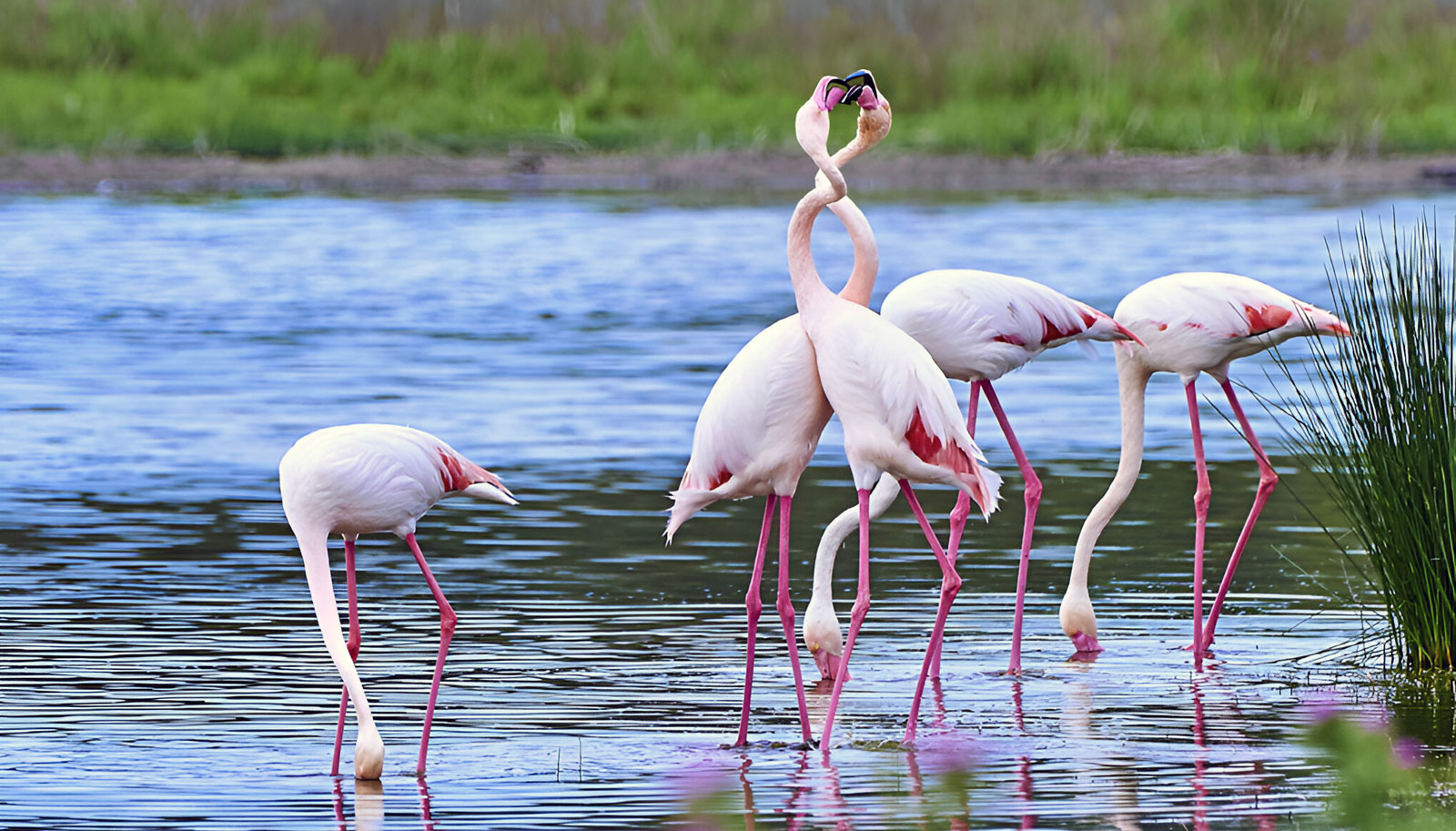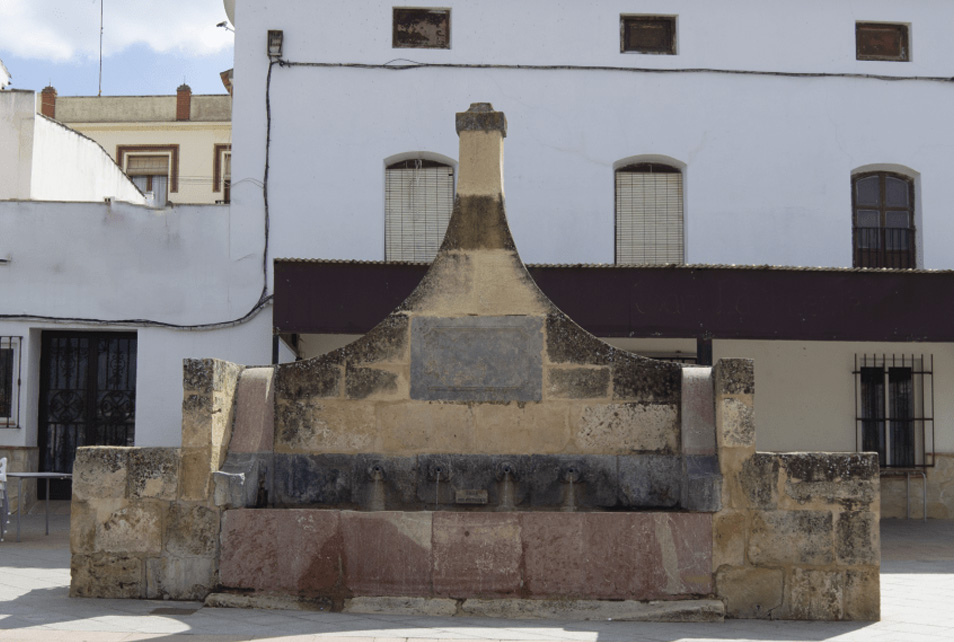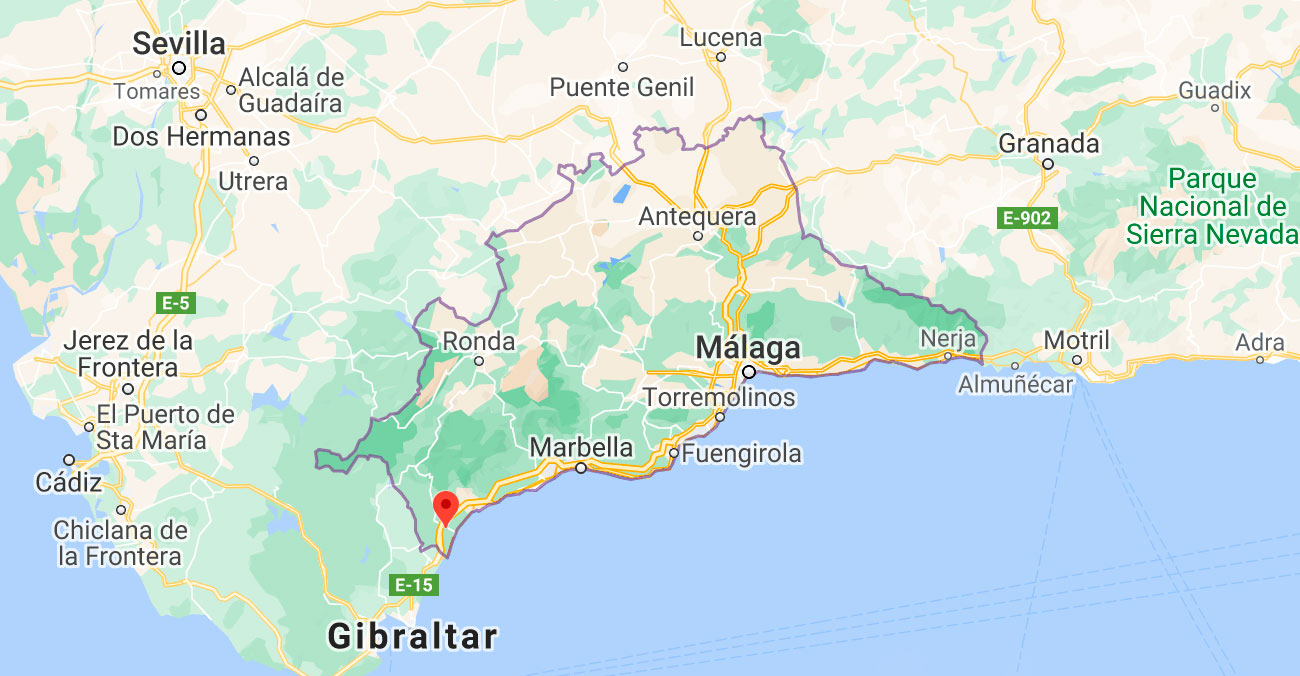Fuente de Piedra
History
Like other urban centres in the province, the foundation of Fuente de Piedra is relatively recent, dating back to the 16th century. However, there must have been a settlement during Roman times, as an altar stone preserved in Antequera bears a Latin inscription: “FONTI . DIVINO . ARAM . L. POST HUMIUS . SATULIUS . EX. VOTO. D,” referring to the healing of an individual thanks to the waters of the fountain, which led to the erection of the altar. Other historians highlight the curative properties of the fountain, particularly its ability to dissolve kidney and bladder stones.
As a result, the fountain is believed to have Roman origins. It was built in the town square in the 18th century and reconstructed on Roman foundations. This fountain was buried and recovered a few years ago. The current fountain that can be seen and visited today is a monument honouring the original one.
Its characteristics include a wide base and a triangular shape towards the top. It was rebuilt from reconstructed stone blocks of the previous fountain, after which Fuente de Piedra was named.
Since time immemorial, dating back to the Romans, its waters were renowned worldwide for their healing properties. It is said that they cured numerous ailments, including kidney stones.
The town originated from settlements that developed around the Fuente de la Piedra, named “Fons Divinus” due to its curative properties.
All population settlements in the area, from prehistoric times onwards, are attributed to the presence of one of the town’s most important resources: the lagoon, now known as the Fuente de Piedra Natural Reserve.
Monuments
When you visit Fuente de Piedra, don’t forget to visit these monuments and places of interest:
CASA PALACIO CONDE DEL CASTILLO DEL TAJO
This is the oldest civil monument in Fuente de Piedra. Its foundations possibly date back to the 16th century, though it has undergone multiple adaptations over four centuries to meet socio-economic needs. Currently, it preserves its elegant lookout tower, a symbol of the county, and its delicate balconies. The building served as a church for five years (1884–1889), housing the temple’s utensils when it was at risk of collapse due to the 1884 earthquake. Mass was held in the mansion’s ground-floor halls until the reconstruction of the current parish church.
NECRÓPOLIS PROTOHISTÓRICA DE LA NORIA
The La Noria necropolis (6th–5th centuries BC and Early Roman Empire) is a key archaeological site in Andalusia.
Protohistoric Period • Burial Mounds: Ten funerary structures, including the remarkable “Mound C” (22 m).
• Rituals: Cremations with grave goods, blending Tartessian and Iberian influences.
Hierarchy: The organisation reflects a stratified society. Roman Period
Burials: Cremations with bricks (Type 4) and simple inhumations (Type 5).
Agricultural Use: Aligned pits for vine cultivation reused the space.
La Noria connects Tartessian and Iberian cultures with the transition to the Roman era.


NTRA. SRA. DE LAS VIRTUDES CHURCH
This 19th-century temple was rebuilt after the 1884 earthquake in a historicist and neo-Mudejar style. It features a corner belfry and a basilica layout with semicircular arch arcades. The main altar houses a three-tiered Neoclassical altarpiece with a Calvary scene and the shrine of the town’s patron, Our Lady of Virtues. Its dedication predates the town and it was originally named “Misericordias” but tradition linked its name to the healing properties of the local waters.
NATURE RESERVE LAGUNA DE FUENTE DE PIEDRA
The Fuente de Piedra Lagoon, the largest in Andalusia, is ecologically significant and a vital breeding ground for the Greater Flamingo and over 30 other waterbird species.
Historically exploited for its salt content, it is now a protected Natural Reserve, designated a Special Protection Area for Birds (SPA) and a Ramsar site.
It is a crucial wetland in the western Mediterranean. Spanning 1,400 hectares, it is the biggest lagoon in Andalusia and hosts the largest flamingo colony in the Iberian Peninsula, second only to Camargue in Europe.
Gastronomy
Fuente de Piedra’s gastronomy is defined by the excellence of its local products, particularly extra virgin olive oil and wine.
Regarding olive oil, SAT El Labrador and the Nuestra Señora de las Virtudes Cooperative stand out, both committed to producing high-quality olive oil that combines tradition and modern techniques. This oil is the basis for traditional dishes such as gazpacho, migas, porra majá a la antigua, and local pastries like pestiños and olive oil cakes.

As regards to wine, Bodegas Málaga Virgen is notable for its long-standing wine tradition. Its muscatel, red, and rosé wines are highly appreciated and pair perfectly with local products such as homemade cured meats, cheese, and traditional recipes.
These products, along with the region’s traditional cuisine, make of Fuente de Piedra a place where culinary tradition reflects the area’s rich cultural and natural heritage.
Festivities
Holy Week
Fuente de Piedra’s Holy Week is an emotional and deeply rooted celebration. Though simpler than in larger cities, its processions have an intimate character, with religious floats parading through the streets to sacred music and saetas.
PILGRIMAGE Ntra Sra de las Virtudes
Held in May, this pilgrimage honours Fuente de Piedra’s patron saint, the Virgin of Virtues. Locals go through the Fuente de Piedra Natural Reserve taking their patron to Del Monte Park.
Fair Fuente de Piedra
One of the town’s most important and eagerly awaited festivities, usually held in July. Over several days, the town comes alive with music, fair tents, dances, and activities for all ages. Residents and visitors enjoy the festive atmosphere and the town’s renowned hospitality. It is to be highlighted the crowning of the Fair Queen and Mister with their court of honour, as well as the Ribbon Races on Motorbikes (declared a provincial tourist attraction).

Festivities in Honour of Our Lady of Virtues
Held in September, this celebration honours the town’s patron saint. It includes religious events such as the Virgin’s procession, as well as cultural and festive activities like verdiales (traditional music and dance). The main day, the day of the Virgin of Virtues, is celebrated on September 8th. Another key event is the Ribbon Races on Horseback in Calle Ancha.
Throughout the year, various other events take place, including:
• Carnival (February–March) • Candelaria (February) • Andalusia Day (28 February) • Women’s Week (March) • Cultural Week (March–April) • Youth Week (August) • Seniors’ Week (October) • Ureña (31 October) • Tapas Route (November) • Christmas (December)

